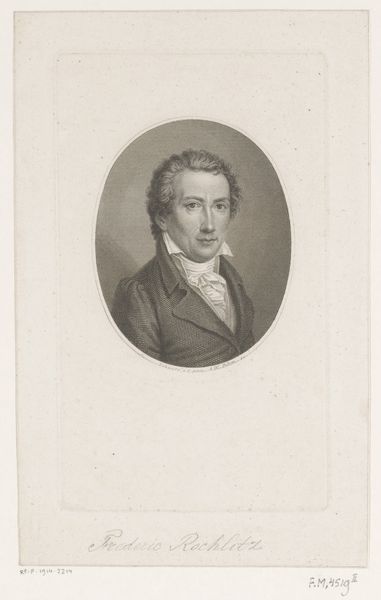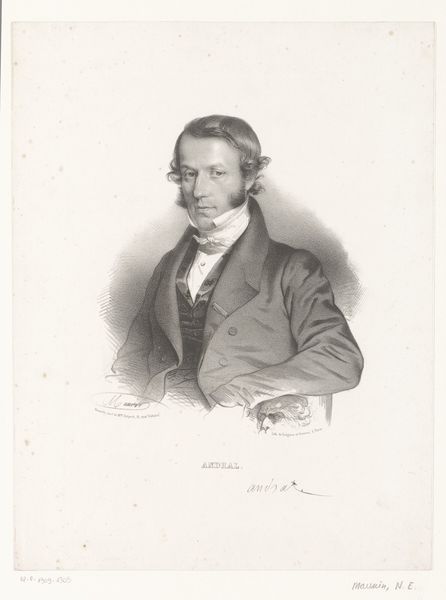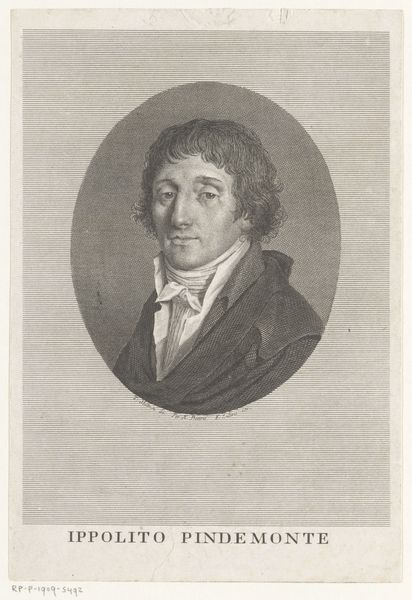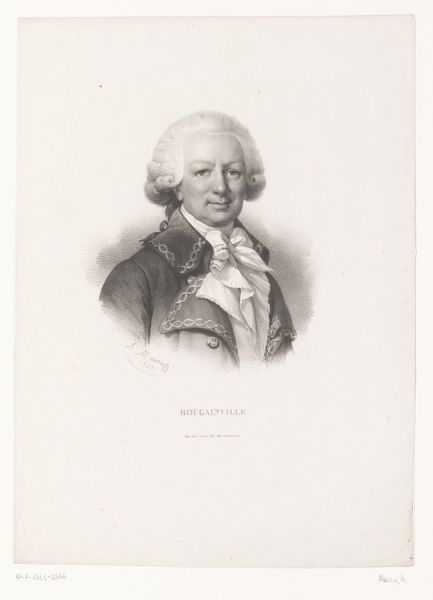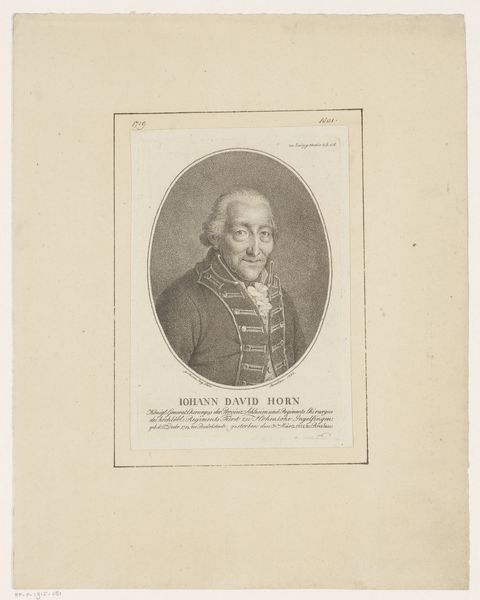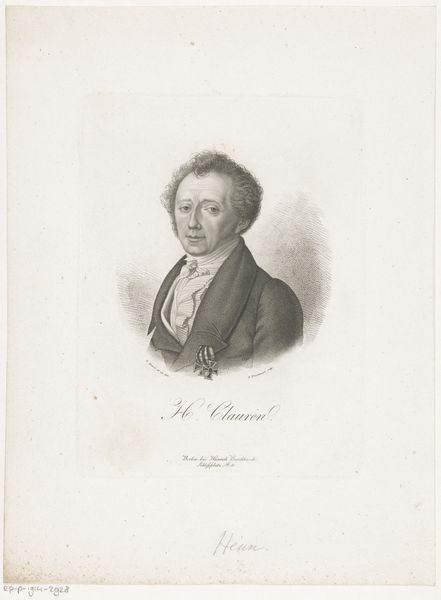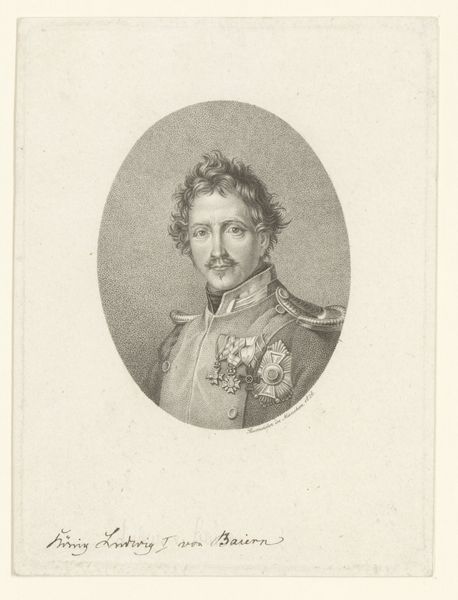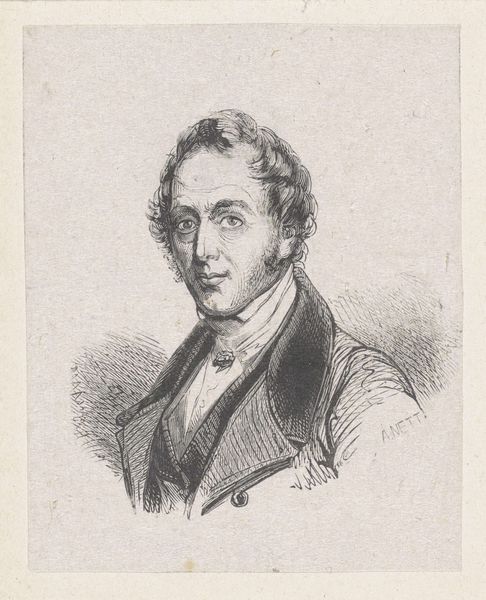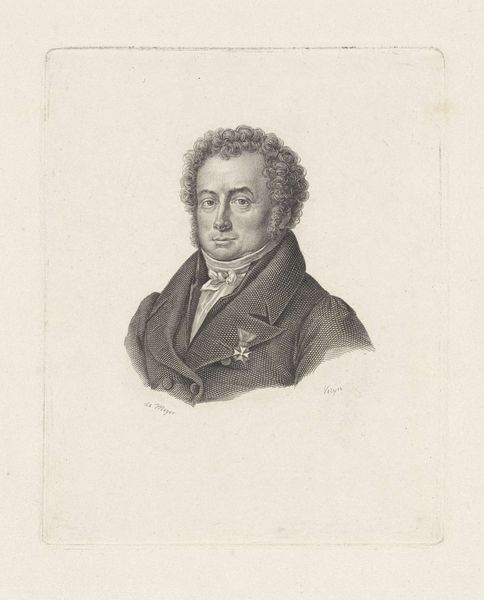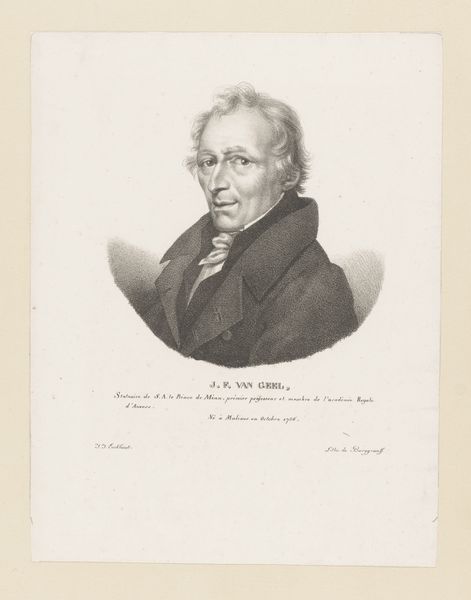
drawing, lithograph, print, paper
#
portrait
#
drawing
#
neoclacissism
#
lithograph
# print
#
paper
#
france
#
history-painting
Dimensions: 216 × 183 mm (image); 414 × 279 mm (sheet)
Copyright: Public Domain
Editor: Here we have Horace Vernet’s 1817 lithograph, “Portrait of Carle Vernet,” currently at the Art Institute of Chicago. The stark monochrome and the precise lines of this portrait give it a sense of austere elegance, wouldn't you agree? What aspects of the composition stand out to you the most? Curator: Precisely. Let’s focus on the interplay between the line and the form. Note the use of hatching to delineate the figure. See how it's denser in the shadowed areas, lending a sense of volume to Carle Vernet's face and clothing. And how do you interpret the ovoid shape formed by the hatching behind his head? Does this contour soften or emphasize the portrait’s overall structure? Editor: It seems to subtly emphasize his head, acting like a soft halo almost. But what does that achieve, beyond a basic aesthetic effect? Curator: It frames the head, certainly, and subtly isolates the figure. The line here becomes a powerful structuring device. The stark whiteness of the surrounding paper further accentuates the portrait itself, directing our attention entirely toward the formal relationships within the image. And the slightly asymmetrical, almost romantic rendition of the subject's hair offers an interesting tension with the classical, portrait-like composition, wouldn't you say? Editor: Absolutely. Now I see how the lines not only define form, but they contribute to a carefully balanced tension throughout the image. Thank you. Curator: Indeed. Appreciating this lithograph reveals how seemingly simple lines can carry so much structural and aesthetic information, highlighting the essence of portraiture through pure form.
Comments
No comments
Be the first to comment and join the conversation on the ultimate creative platform.
